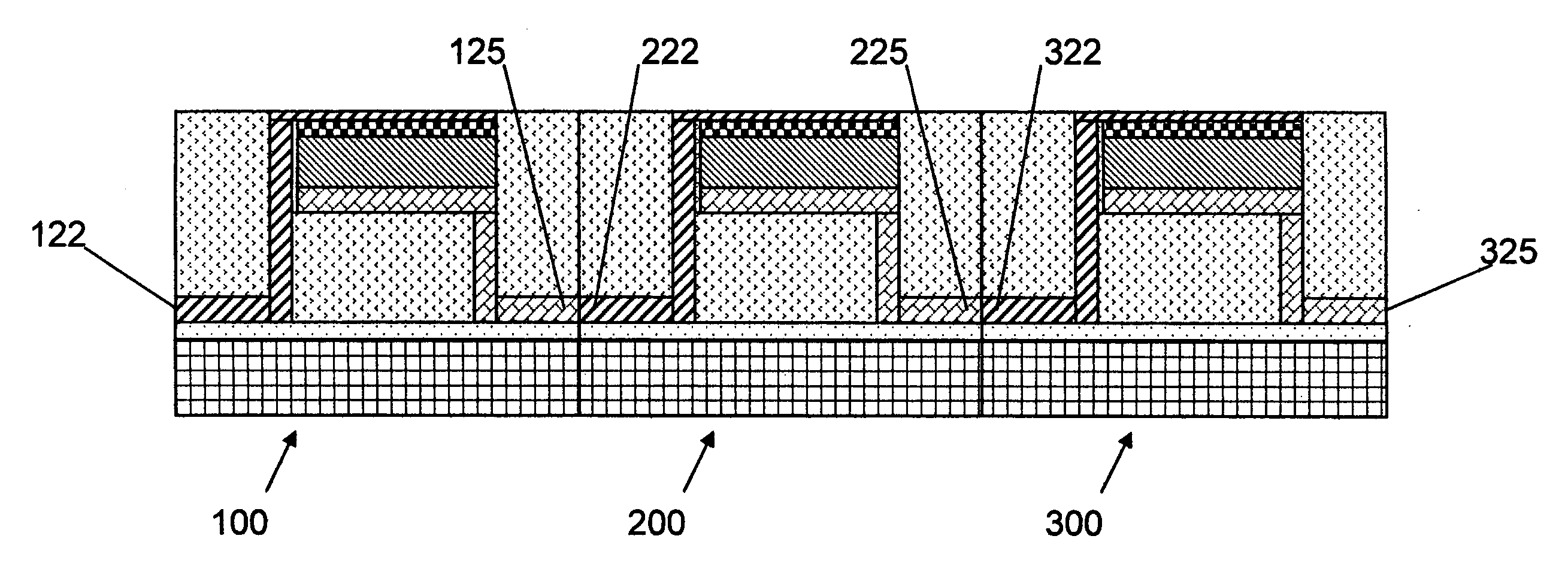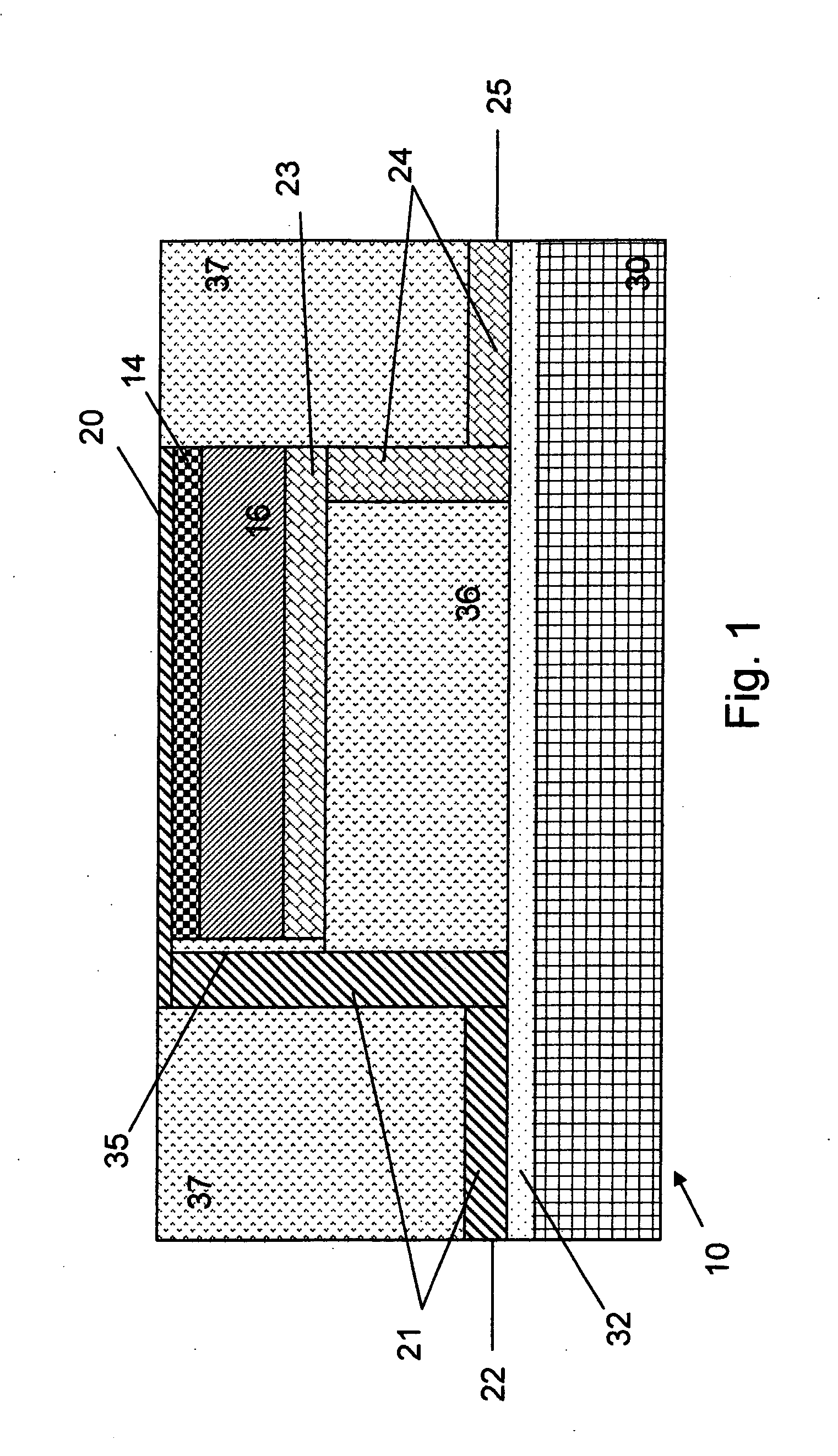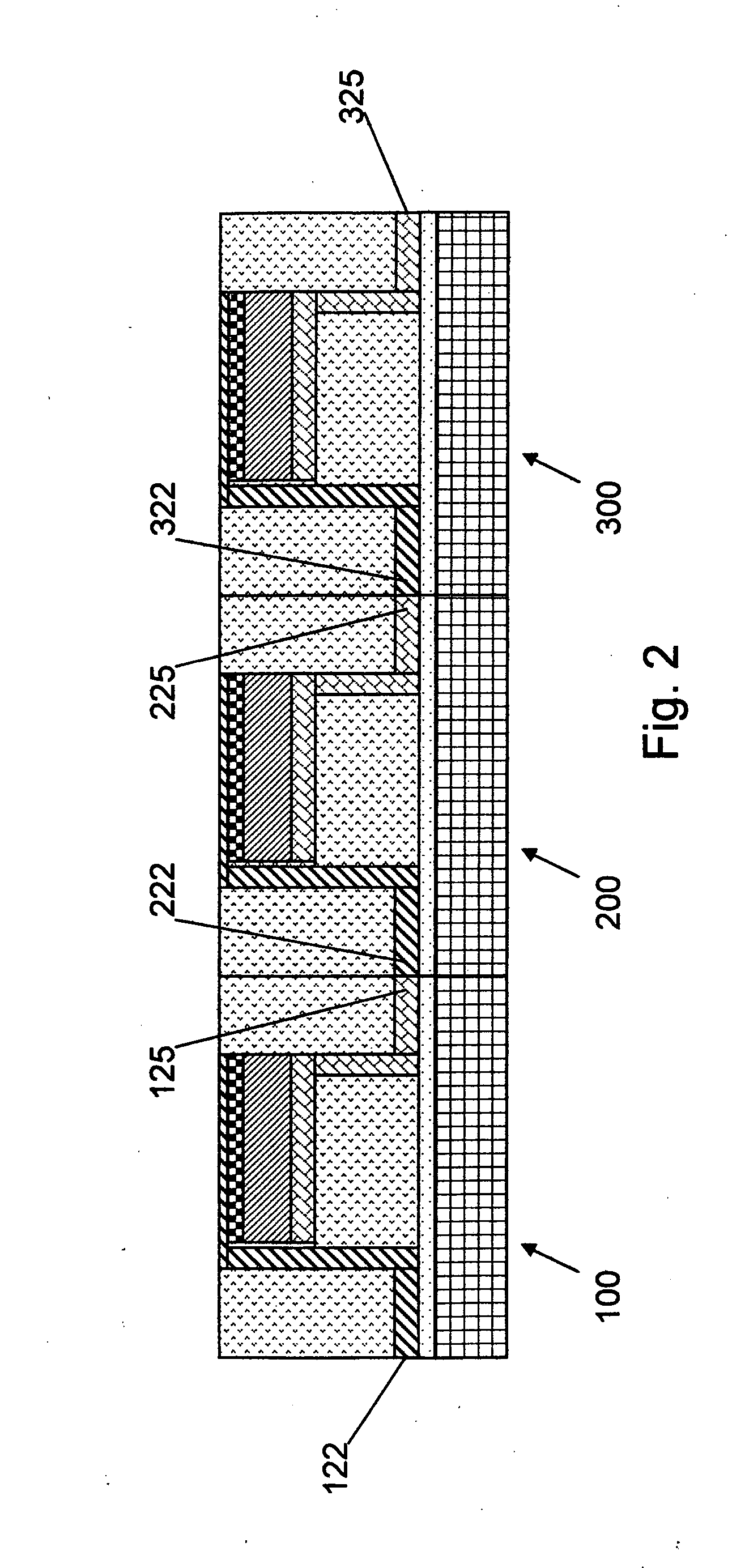Seebeck Solar Cell
- Summary
- Abstract
- Description
- Claims
- Application Information
AI Technical Summary
Benefits of technology
Problems solved by technology
Method used
Image
Examples
Embodiment Construction
[0011]Referring to FIG. 1, an exemplary device 10 in accordance with the present invention is depicted. In that example a conventional photovoltaic cell is formed by diffusing an n-type dopant into one region 14 of a p-type wafer 16. Region 14 will be referred to here as the “front” of the cell because in this example that is the region most directly exposed to solar radiation. Those of ordinary skill in the art will understand that the commercial manufacture of such a cell will require various additional structures, steps and details not described here, such as deposition of an antireflective coating, sintering, a tempered glass front cover and polymer encapsulation. All of these are well-known to the art and therefore are not described in further detail.
[0012]Front contact 20 is formed in the upper / front (n-type) region and connected to a first electrical lead 21, having lead end 22. The front contact and first lead are formed in a conventional manner, well-known in the art. In pa...
PUM
 Login to View More
Login to View More Abstract
Description
Claims
Application Information
 Login to View More
Login to View More - R&D
- Intellectual Property
- Life Sciences
- Materials
- Tech Scout
- Unparalleled Data Quality
- Higher Quality Content
- 60% Fewer Hallucinations
Browse by: Latest US Patents, China's latest patents, Technical Efficacy Thesaurus, Application Domain, Technology Topic, Popular Technical Reports.
© 2025 PatSnap. All rights reserved.Legal|Privacy policy|Modern Slavery Act Transparency Statement|Sitemap|About US| Contact US: help@patsnap.com



